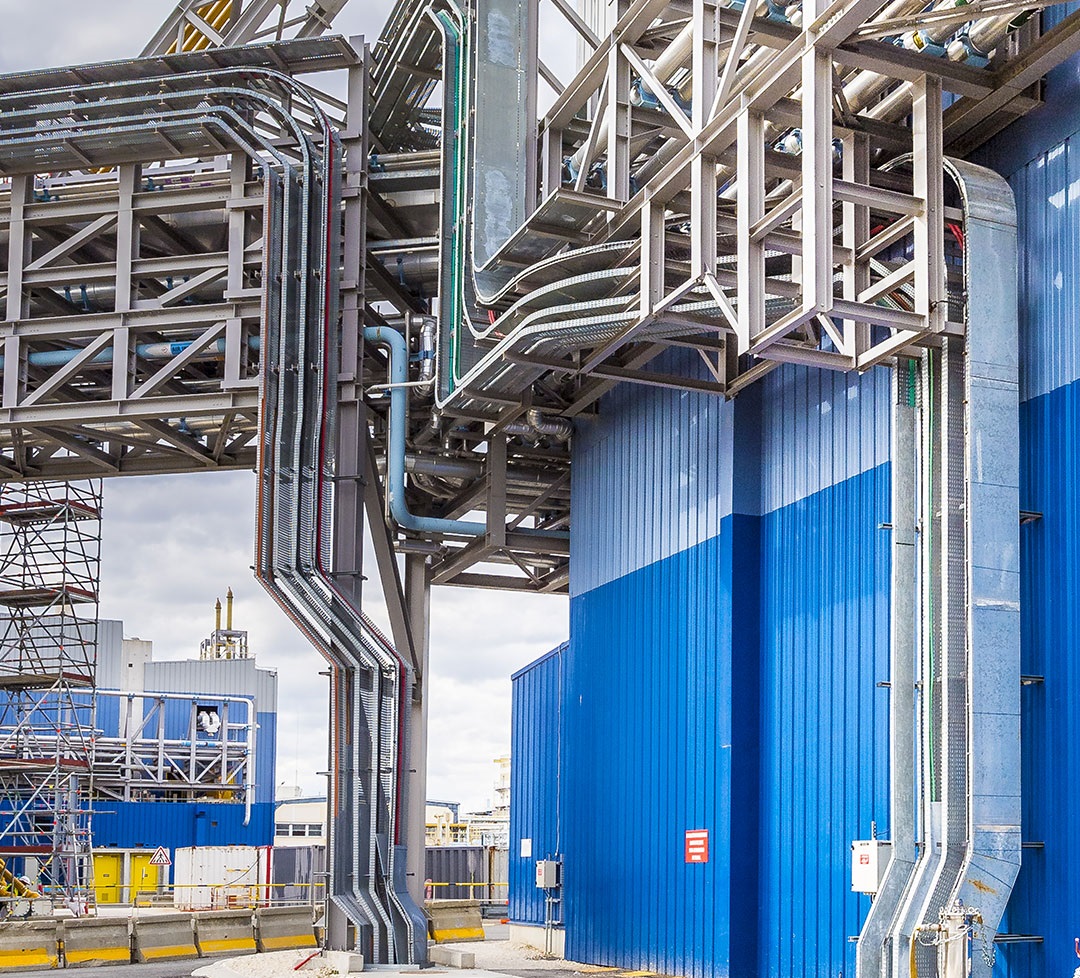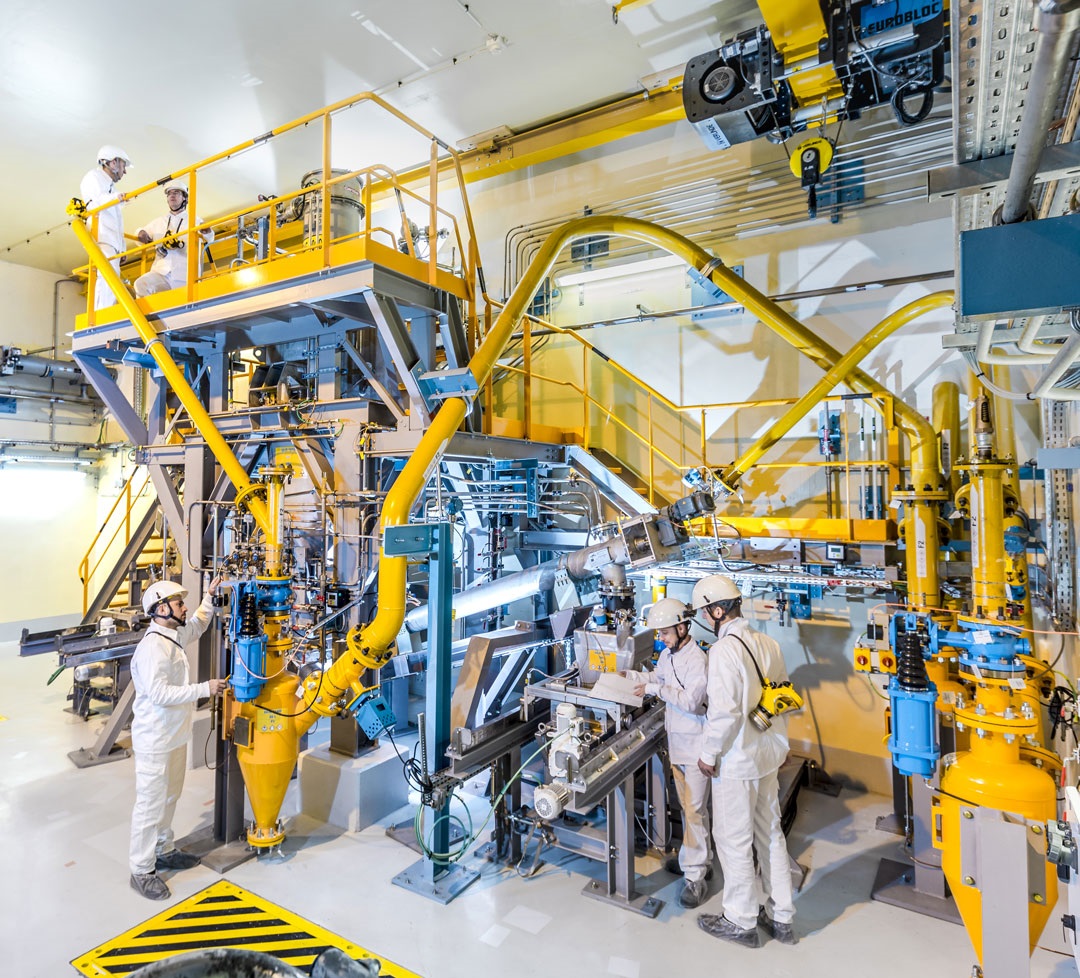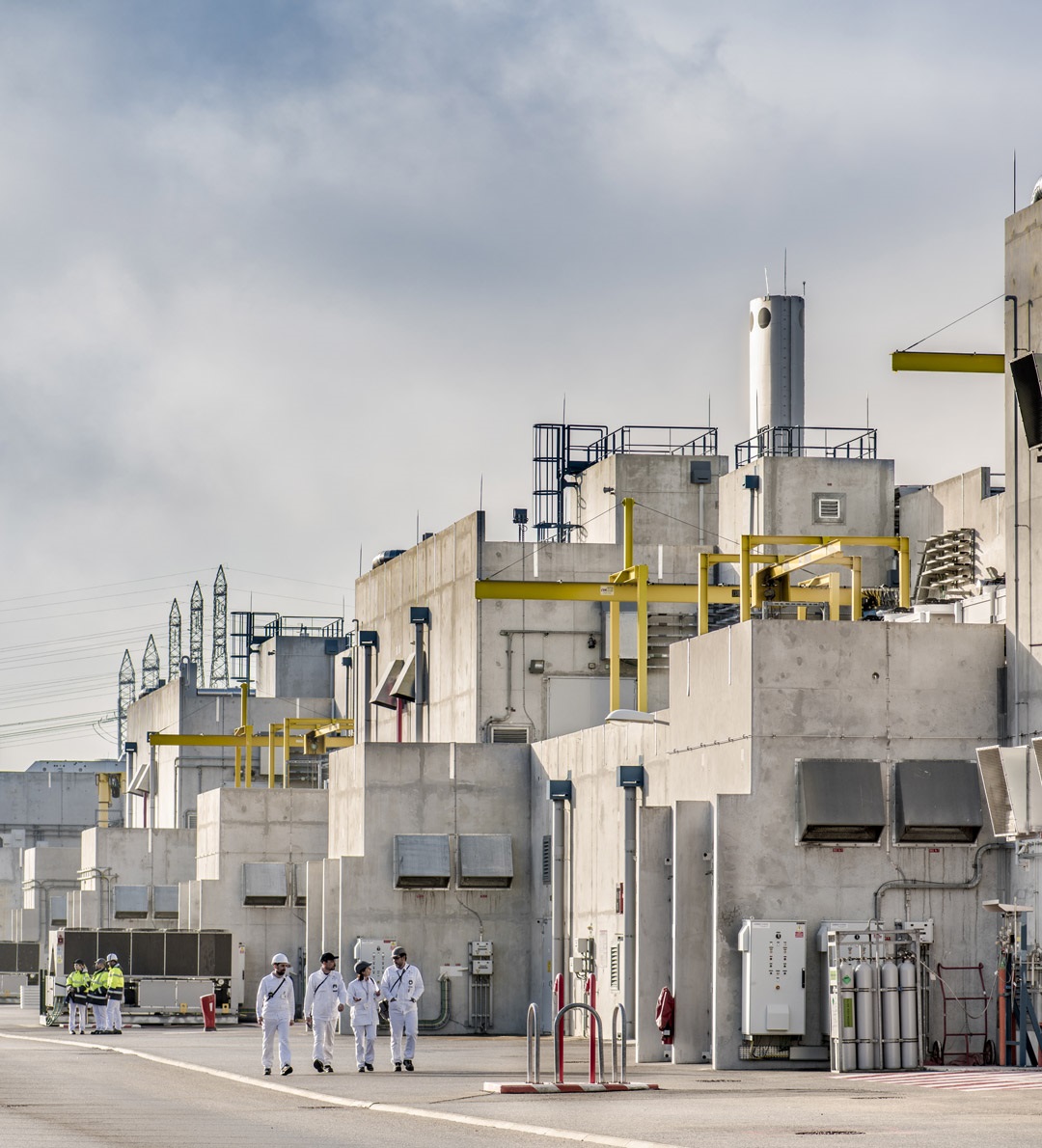
Orano Tricastin: 60 years of expertise in uranium chemistry and enrichment
Orano Tricastin is an expert in uranium conversion and enrichment and in fluorine chemistry. It is one of the largest industrial platforms in Europe and is located in two Departements (Drôme and Vaucluse). The site extends into the communes of Pierrelatte, Saint-Paul-Trois-Châteaux and Bollène. Orano Tricastin carries out the chemistry (conversion, defluorination and denitration) and uranium-enrichment activities at the site that precede the final stage in the manufacture of fuel assemblies for reactors in nuclear power plants across the world.
- Almost 60 years of industrial experience
- 2,500 Orano employees (conversion, enrichment and engineering; dismantling and services; shared support functions)
- 2,000 employees in partner businesses
- Area of site: 650 ha
Immersive visit to Tricastin
Find out moreAn industrial model unique in Europe providing our international customers with a secure supply
The Orano Group has invested massively over the last 15 years in the industrial platform at Tricastin to renew its production system: the Philippe Coste conversion plant was inaugurated in 2018 and the George Besse II enrichment plant in 2010. Further investment has been made to modernize the chemistry and production-support activities and to secure them over the longer term. These investments significantly strengthen the nuclear safety of the industrial operations, as they meet the most demanding standards, and limit the facilities’ environmental footprint. The new facilities thus ensure that the site’s activities can continue for the next 40 years, and contribute to France’s energy independence and to the production of low-carbon energy.
The Tricastin Malvési industrial platform covers all upstream activities in the fuel cycle. This industrial model is unique in Europe.
Orano Tricastin: expert in uranium conversion and fluorine
The new conversion plants (Orano Malvési at Narbonne and the Philippe Coste plant at Tricastin) and the enrichment plant (Georges Besse II) represent an investment of over 5 billion euros, one of the largest industrial investments made in France in recent years. It offers France a manufacturing system that is at the technological forefront of both nuclear and occupational safety and environmental performance. The system is competitive internationally, guaranteeing a reliable supply of electricity to our markets in France and abroad for the next 40 years.
The Philippe Coste plant: converting the uranium
The first conversion stage takes place at the Malvési site (Narbonne (Aude)), where the uranium ores are purified and chemically converted into UF4. The second stage of uranium conversion takes place at the Tricastin site, where uranium tetrafluoride (UF4) is converted into uranium hexafluoride (UF6). This stage is a preliminary to the enrichment of the uranium. The fluorine required for the conversion stage is produced at the site.
To meet the needs of its customers throughout the world, Orano chose to renew its industrial conversion system with the new Philippe Coste plant, which was commissioned in 2018. Major priorities during the project’s design were to achieve the highest level of nuclear safety, and to reduce the environmental footprint.
The new Philippe Coste plant is an establishment classified for environmental protection in the Seveso Upper tier. It meets the latest and most demanding standards and uses the best available technologies to improve the containment of the material. Orano is the first manufacturer in the world to invest in a new conversion plant.
To meet the needs of its customers throughout the world, Orano chose to renew its industrial conversion system with the new Philippe Coste plant, which was commissioned in 2018. Major priorities during the project’s design were to achieve the highest level of nuclear safety, and to reduce the environmental footprint.
The new Philippe Coste plant is an establishment classified for environmental protection in the Seveso Upper tier. It meets the latest and most demanding standards and uses the best available technologies to improve the containment of the material. Orano is the first manufacturer in the world to invest in a new conversion plant.
NB: The Philippe Coste plant is a production facility. Its main activity is chemistry, which is run to the highest standards of nuclear and occupational safety in the nuclear industry.
Production capacity: 15,000 tU/year: enough to supply low-carbon energy to almost 180 million homes
The Georges Besse II plants: enriching the uranium
After the uranium conversion stage, the uranium hexafluoride (UF6) is enriched at the Tricastin site in the Georges Besse II plant (BNI no.168). To enrich the uranium, the Georges Besse II plant uses centrifuge technology, which has been proven in use for over 30 years in Europe.
The site has two enrichment plants, South and North. It also has a workshop, known as REC II, where the material is received and checked and sampled for quality on entering and leaving the plant. The Georges Besse II plant is modular in design, and so could be commissioned in stages between the end of 2010, when the South plant started production, and 2016.
The Georges Besse II enrichment plants have replaced the Eurodif Production plant, which produced uranium enriched by gaseous diffusion up until June 2012. The new enrichment plants are designed to operate to the highest standards of occupational and nuclear safety, in particular for earthquake resistance, fire-fighting and material containment.
The site has two enrichment plants, South and North. It also has a workshop, known as REC II, where the material is received and checked and sampled for quality on entering and leaving the plant. The Georges Besse II plant is modular in design, and so could be commissioned in stages between the end of 2010, when the South plant started production, and 2016.
The Georges Besse II enrichment plants have replaced the Eurodif Production plant, which produced uranium enriched by gaseous diffusion up until June 2012. The new enrichment plants are designed to operate to the highest standards of occupational and nuclear safety, in particular for earthquake resistance, fire-fighting and material containment.
Production capacity: 7.5M SWU (separative work units) / year.
Transforming the uranium
The depleted uranium obtained during the enrichment process can be converted into uranium oxide (U3O8) via the defluorination process or the denitration process. Find out more in our Uranium processing page.
Specific maintenance and storage services
The Tricastin site has unique expertise in servicing the containers used to transport uranium-bearing materials (48Y and 30B cylinders, UF4 tanks and LR65 tanks, etc.), and provides storage services for its customers.
Did you know? One 30B cylinder of enriched uranium can supply the electricity needs of a town of 300,000 people for one year.
- Malvési The Orano Malvési plant is responsible for the first phase of conversion purifying the natural uranium ore from the mines into uranium tetrafluoride (UF4).
- International expert in uranium processing Orano is a world leader in uranium conversion and enrichment, key steps in the development of nuclear fuel.





